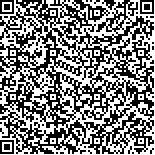下载中心
优秀审稿专家
优秀论文
相关链接
摘要

在植被覆盖区域,归一化植被指数(NDVI)被广泛地应用于干旱遥感监测。和基于光学遥感的植被指数相比,Shi等提出的微波植被指数MVI(Microwave Vegetation Index)被证实能够反映更多的植被生长信息。本文以MVI为基础,利用MVI代替目前比较成熟的温度植被指数TVDI(Temperature Vegetation Index)中的NDVI,构建温度微波植被干旱指数TMVDI(Temperature Microwave Vegetation Index),发展了一种新的干旱监测方法。本文以2006年夏季四川省发生的百年难遇的干旱为研究对象,将基于TMVDI与TVDI的干旱监测结果进行了对比分析。最后,为评估监测结果的准确性,将遥感监测的结果与基于气象站点降雨观测数据构建的标准降雨指数SPI(Standardized Precipitation Index)的计算结果进行了对比分析。结果表明,利用低频降轨微波辐射计数据计算的TMVDI最适合于进行植被覆盖区域的干旱监测。
For a vegetation-covered area, a Normalized Difference Vegetation Index (NDVI) is widely applied in drought monitoring by remote sensing. Compared with vegetation index based on optical remote sensing, the proposed Microwave Vegetation Index (MVI) provided additional information on vegetative growth. Temperature microwave vegetation index (TMVDI) was also developed using MVI based on Temperature Vegetation Dryness Index (TVDI) instead of NDVI. In the present study, drought that affected Sichuan province in the summer of 2006 was observed. Drought monitoring results based on TMVDI and TVDI were compared and then analyzed. We particularly compared the monitoring results obtained by remote sensing with those based on the standardized precipitation index established from the precipitation observation data of meteorological observatory to evaluate monitoring accuracy. These results also show that TMVDI, which is calculated on the basis of low-frequency microwave radiometer data (descending pass), is considered as the most suitable index that can be used to monitor drought in vegetation-covered areas.

